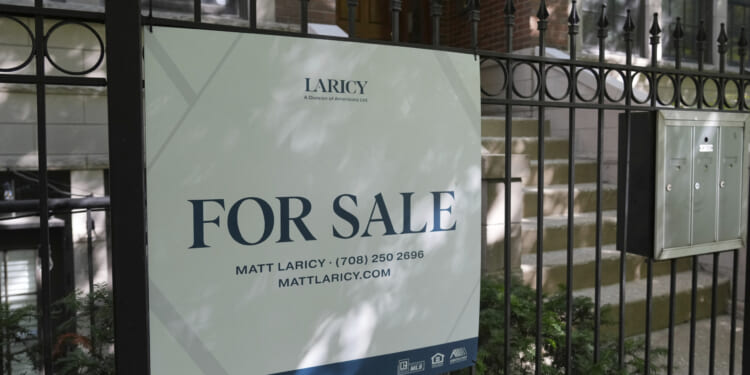Policies that make building expensive have continued to choke Illinois’ housing supply, pushing more families away with high prices. Nearly $90K has been added to the average house price since 2018.
Illinois families hoping to buy a home are facing a tough reality: rising prices are pushing once-affordable communities out of reach for working households.
Zillow’s Home Value Index shows statewide home values have climbed 46.2% since August 2018. A typical home that sold for $193,307 six years ago now costs $282,573 – almost $90,000 more.
The surge is even worse in some areas. In Park Forest, prices have more than doubled, jumping 102.1% since 2018. North Chicago has seen a 123.1% increase.
Behind these figures are families being priced out of the neighborhoods where they grew up, worked and hoped to raise children of their own.
The reason prices keep climbing is straightforward: there aren’t enough homes. Illinois faces a worsening housing shortage each year. A recent report estimated the state will need 227,000 additional housing units during the next five years just to meet demand. That would require production to double, which is highly unlikely in most metro areas.
Zillow data shows each of Illinois’ 26 metro areas has lost housing inventory since March 2018.
In the Chicago metro area, listings fell from 38,581 homes in 2018 to just 24,181 today: a 37% drop. That reduction means thousands of families are shut out of homeownership.
And Chicago is not unique. Seventeen other metro areas have suffered even sharper losses, fueling bidding wars, pushing families into homes they can barely afford or forcing them to leave altogether.
Illinois’ housing shortage stands out even more when compared nationally. While many states are rebuilding their housing supply, Illinois remains well behind.
Realtor.com data shows Illinois has regained only 40% of its pre-pandemic housing listings. The U.S. average is 90%—over twice Illinois’ pace of recovery. The US average also increased about 15% since this time last year, while Illinois only improved 2%. The rest of the country seems to be improving their housing picture; Illinois, however, remains largely the same.
This disparity leaves Illinois families struggling harder than those in other states to find affordable homes. With fewer listings, competition drives prices higher.
The clear fix is more construction, yet Illinois metro areas continue to build new homes at very low rates. Without a surge in development, the shortage will deepen.
Illinois’ housing crisis isn’t accidental. It’s the product of decades of policy choices that have made building homes more difficult and costly in the places people want to live.
Across the state, restrictive zoning rules block developers from creating housing options working families can afford. At the same time, Illinois’ heavy tax burden drains household budgets, leaving less money available for housing and worsening affordability.
There are proven fixes communities can adopt. Cities could permit up to four-unit buildings in areas currently limited to single-family homes. Eliminating mandatory parking minimums, as Chicago recently did, would free up land for housing in transit-rich neighborhoods. Legalizing accessory dwelling units statewide would create more space for young professionals and older residents on existing lots. But that requires city leaders being willing to let go of their grip on development, rather than adding additional red tape, labor requirements, and personal discretion.
Still, zoning reform alone isn’t enough. Illinois must also confront its nation-leading property taxes, which keep housing out of reach even when homes are available. Real relief requires pairing tax and budget reforms with zoning changes so families once again have a fair chance at homeownership.










